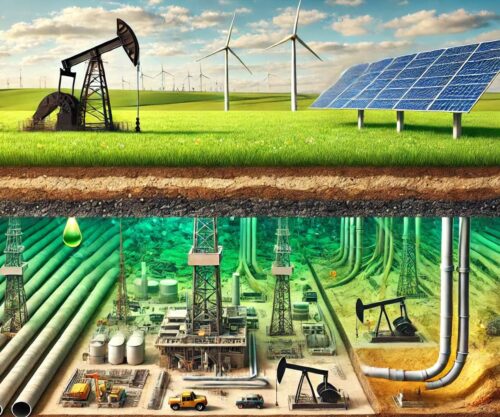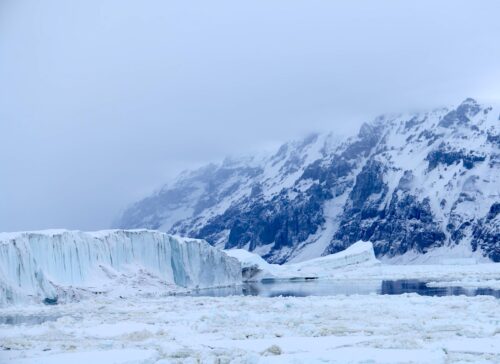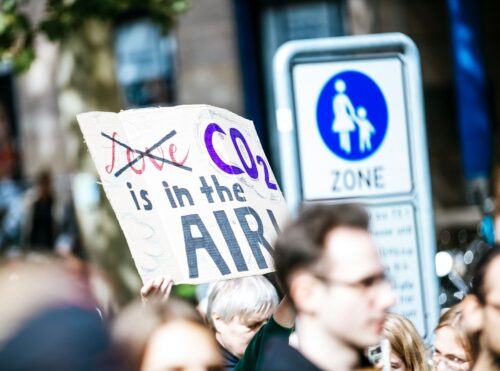 Many governments in the Western world have committed to “net zero” emissions of carbon in the near future. The US and UK both say they will deliver by 2050.
Many governments in the Western world have committed to “net zero” emissions of carbon in the near future. The US and UK both say they will deliver by 2050.
It’s widely believed that wind and solar power can achieve this. This belief has led the US and British governments, among others, to promote and heavily subsidize wind and solar. [emphasis, links added]
These plans have a single, fatal flaw: they are reliant on the pipe dream that there is some affordable way to store surplus electricity at scale.
In the real world, a wind farm’s output often drops below 10 percent of its rated “capacity” for days at a time. Solar power disappears completely every night and drops by 50 percent or more during cloudy days.
“Capacity” being a largely meaningless figure for a wind or solar plant, about 3,000 megawatts (MW) of wind and solar capacity is needed to replace a 1,000 MW conventional power station in terms of energy over time: in fact, as we shall see, the conventional power station or something very like it will still be needed frequently once the wind and solar are online.
The governments of countries with a considerable amount of wind and solar generation have developed an expectation that they can simply continue to build more until net zero is achieved.
The reality is that many of them have kept the lights on only by using existing fossil-fired stations as a backup for periods of low wind and sun.
This brings with it a new operating regime where stations designed to operate continuously have to follow unpredictable fluctuations in wind and solar power. As a result, operating and maintenance costs have increased and many stations have had to be shut down.
It’s already common to see efficient combined-cycle gas turbines replaced by open-cycle ones because they can be throttled up and down easily to back up the rapidly changing output of wind and solar farms.
But open-cycle gas turbines burn about twice as much gas as combined-cycle gas turbines. Switching to high-emissions machinery as part of an effort to reduce emissions is, frankly, madness!
Certain countries are helped because their power systems are supported by major interconnectors to adjacent regions that have surplus power available.
The increasingly troubled French nuclear fleet, which formerly had plenty of spare energy on tap, for a long time helped to make renewables plans look practical across Western Europe.
But this situation is not sustainable in the long term.
Under net-zero plans, all nations will need to generate many times more electricity than they now can, as the large majority of our energy use today is delivered by burning fossil fuels directly.
Neighboring regions will be unable to provide the backup power needed; emissions from open-cycle gas turbines (or new coal power plants, as in the case of Germany at the moment) will become unacceptable; more existing base load stations will be forced to shut down by surges in renewables; more and more wind and solar power will have to be expensively dumped when the sun is shining and the wind is blowing.
Power prices will soar, making more or less everything more expensive, and there will be frequent blackouts.
None of this is difficult to work out. Building even more renewables capacity will not help: even ten or 100 times the nominally-necessary “capacity” could never do the job on a cold, windless evening.
Only one thing can save the day for the renewables plan. Reasonable cost and large-scale energy storage, sufficient to keep the lights on for several days at a minimum, would solve the problem.
What are the options?
First, we need to consider the scale of the issue. Relatively simple calculations show that California would need over 200 megawatt-hours (MWh) of storage per installed MW of wind and solar power.
Germany could probably manage with 150 MWh per MW. Perhaps this could be provided in the form of batteries?
The current cost of battery storage is about US$600,000 per MWh. For every MW of wind or solar power in California, $120 million would need to be spent on storage.
In Germany, it would be $90 million. Wind farms cost about $1.5 million per MW so the cost of battery storage would be astronomical: 80 times greater than the cost of the wind farm!
A major additional constraint would be that such quantities of batteries are simply not available. Not enough lithium and cobalt and other rare minerals are being mined at the moment. If prices get high enough supply will expand, but prices are already ridiculously, unfeasibly high.
Some countries are gambling on hydro-pumped storage. Here the idea is to use electricity to pump water uphill into a high reservoir using surplus renewables on sunny, windy days: then let it flow back down through generating turbines as in a normal hydropower plant when it’s dark and windless.
Many pumped systems have been built in China, Japan, and the United States but they have storage sufficient for only 6 to 10 hours of operation.
This is tiny compared with the several days of storage needed to back up wind and solar power through routinely sunless calm periods.
Much larger lakes at the top and bottom of the scheme are needed. There are very few locations where two large lakes can be formed with one located 400-700 m above the other and separated by less than 5-10 km horizontally.
Such a location must also have an adequate supply of make-up water to cope with evaporation losses from the two lakes. Another problem is that at least 25 percent of the energy is lost while pumping and then generating.
Hydro-pumped storage will seldom be a feasible option. It cannot solve the problem on a national scale even in countries like the USA, which has a lot of mountains.
Carbon capture and storage (CCS) for fossil fuel stations is also touted as a way of avoiding the problems of wind and solar power. But this is not a technology, just a case of wishful thinking.
Despite many years of work and enormous amounts of money spent, nobody has yet devised a technology that can provide large-scale low-cost CCS.
Even if capture worked and didn’t consume most or all the energy generated, storing the carbon dioxide is a huge problem because three tons of carbon dioxide are produced for every ton of coal burned.
Hydrogen is another technology that is often suggested for energy storage: but its problems are legion. At the moment hydrogen is made using natural gas (so-called “blue” hydrogen). This, however, will have to stop in a net-zero world as the process emits large amounts of carbon: you might as well just burn the natural gas.
Proper emissions-free “green” hydrogen is made from water using huge amounts of electrical energy, 60 percent of which is lost in the process.
Storing and handling the hydrogen is extremely difficult because hydrogen is a very small molecule and it leaks through almost anything.
At best this means that a lot of your stored hydrogen will be gone by the time you want to use it: at worst it means devastating fires and explosions.
The extremely low density of hydrogen also means that huge volumes of it would have to be stored and it would often have to be stored and handled cryogenically, creating even more losses, costs, and risks.
The conclusion is simple. Barring some sort of miracle, there is no possibility that a suitable storage technology will be developed in the needed time frame.
The present policies of just forcing wind and solar into the market and hoping for a miracle have been memorably and correctly likened to “jumping out of an airplane without a parachute and hoping that the parachute will be invented, delivered and strapped on in mid-air in time to save you before you hit the ground.”
Wind and solar need to be backed up, close to 100 percent, by some other means of power generation. If that backup is provided by open-cycle gas or worse, coal, net zero will never be achieved: nor anything very close to it.
There is one technology that can provide a cheap and reliable supply of low-emissions electricity: nuclear power. Interest in nuclear power is increasing as more and more people realize that it is safe and reliable.
If regulators and the public could be persuaded that modern stations are inherently safe and that low levels of nuclear radiation are not dangerous, nuclear power could provide all the low-cost low-emissions electricity the world needs for hundreds or thousands of years.
But if we had 100 percent nuclear backup for solar and wind, we wouldn’t need the wind and solar plants at all.
Wind and solar are, in fact, completely pointless.
Top photo: Pennsylvania nuclear power plant.
Read more at Daily Telegraph



















I guess it makes sense that the same people who are trying to solve a problem that doesn’t exist want to do so with solution that can’t work. I try to understand their thought process, or more accurately their non-thought process. Technology has accomplished some amazing things. Teenagers are carrying smart phone in their hip pockets where each phone has more computing power than all of the computers in the world had in the early days of computing. Using technology that is primitive from today’s perspective we put men on the moon. For people who have a poor feel for technology surely the problem of energy storage for power grids can be solved.
The reality is we are not as far along as many think. It is projected that in 2023, an estimated 609,820 people will die of cancer in the United States. We have known the exact mechanism of Alzheimer’s and Parkinson’s disease for thirty years and still do not have cures. I suspect that energy storage for a power grid is even a more challenging problem. The ironic thing is we do have the technology right now to go to net zero for utilities. That is nuclear power. Yet, it is too late. If the stupidity that is blocking its deployment could be over come tomorrow, it would take decades to develop. One thing that can happen right away is forcing net zero will cause job loss, devastate our economy, and make blackouts a normal part of our lives.
How much water by passes hydraulic generating stations and goes over Niagara Falls for “tourist purposes” ?The Niagara Falls Treaty of 1950 specifies that a minimum flow is maintained during tourist hours. Isn’t it time for a review?
World War 2. An American Lieutenant worked behind the front line repairing damaged tanks. At the end of the war his unit was working in a brown-coal-fired power plant just west of Cologne. Open cut mining with a conveyor taking the coal directly to the plant. Size – about a mile across and 600 feet deep. Apart from generating electrical power, it also produced a low-grade gasoline for the German army, and coal ‘briquettes’ for civilian use.
He had a question in the book he wrote. Why hadn’t the USAAF bombed the power plants? Rather than attacking the ball-bearing factories, why wasn’t their power supply destroyed? (He ‘guessed’ politics, for ‘after the war’)
Last time I looked at satellite photos, at least one of those pits is still being worked.
(“Death Traps” – is an engrossing personal account of a of the American Tanker’s experience in World War II from a unique insider’s perspective, the man in charge of recovering and fixing destroyed tanks. [I know I learned a lot from this book.])
I read this from a twitter posting yesterday. This needs to be required reading by every legislator in Congress and in states and make them explain how wind and solar will ever replace fossil fuels.
I have long argued that there is no possible way batteries can provide the needed backup when wind and solar fail to deliver. Not only that but the incredible increase in wind and solar installations would be needed to charge the (nonexistent) batteries so those batteries could be tapped into when wind and solar aren’t available.